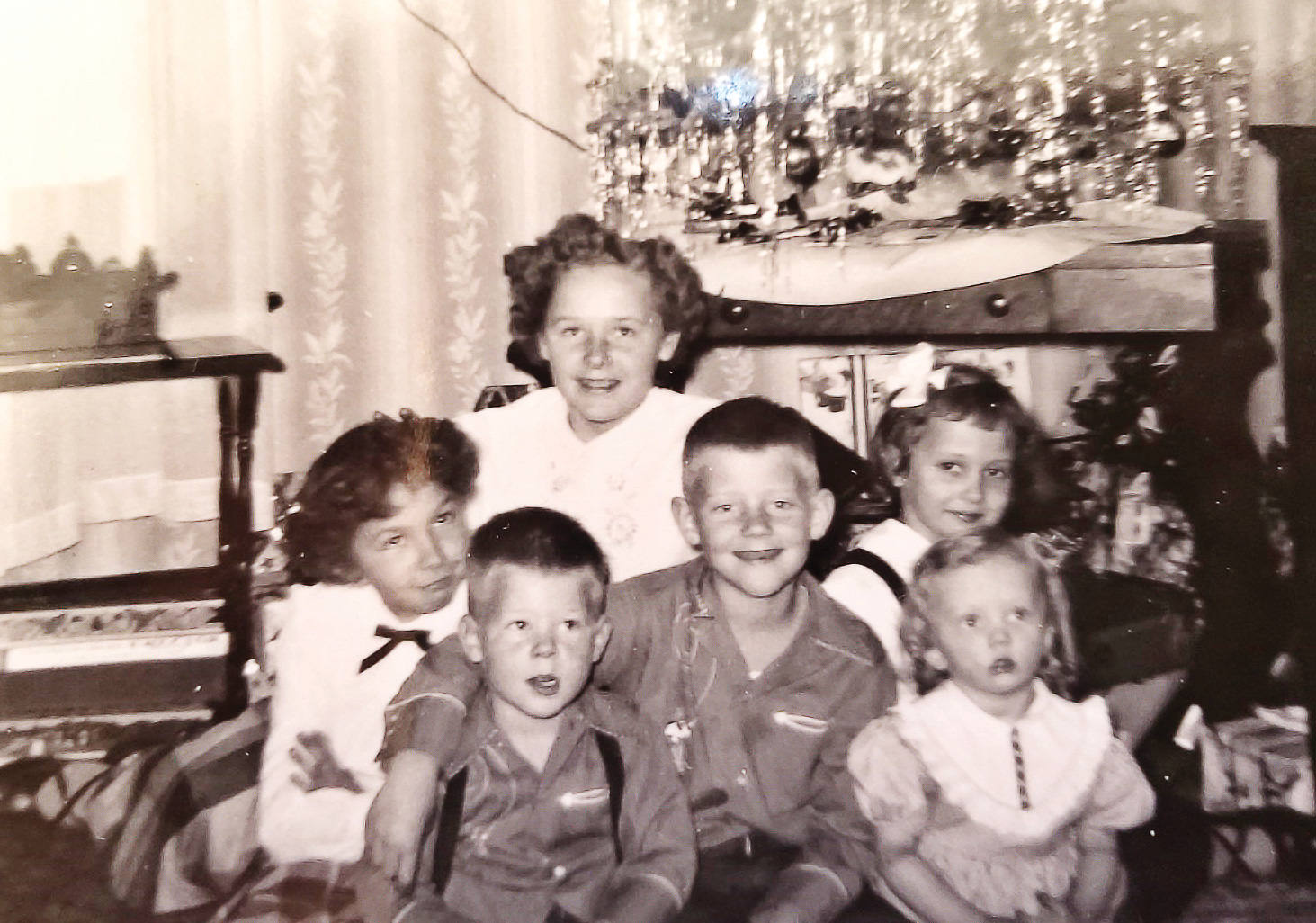
Sandra Ristow, the oldest child, circa 1952, with her Dankemeyer cousins posing near Grandma’s tinsel laden tree.
Sandra Ristow
Where did all that tinsel on the Christmas tree come from? Did you have an advent calendar on which you counted down to Christmas? Did your family hide a blown glass pickle ornament in your tree? Did you go caroling? Did you bake special cookies or make candies? Did you open your presents on Christmas Eve or Christmas Day? Did you attend Midnight Mass? Was there a huge family gathering? If you were Jewish and celebrated Hanukkah, did you light a menorah or play with dreidels as a child?
Could it be that those traditions that we hold dear on holidays are customs inherited from our collective past? I know that as one of the 70 million people in the United States with German heritage (our largest immigrant group), the Christmas customs practiced in my family’s home were related to my ancestors from Bavaria, Saxony, Posen, Braunschweig, and Pomerania. In the Genealogy Club we not only seek out the birth, death, and marriage dates for our ancestors, but we want to know the context in which they lived. We want to put flesh on the bones of their lives, thus, our interest in holiday customs.
The special foods of each group at holiday time were central to their celebrations. In previous years, members of our Genealogy Club have participated in an ethnic holiday cookie and recipe exchange. Germans have special affinity for Christmas cookies, candies, and breads including spicy Pfeffernusse (peppernuts), Zimtsterne (cinnamon stars), Lebkuchen (spice cookies), poppyseed strudel, marzipan, and Gebrannte Mandeln (burnt almonds).
In my family, putting up the Christmas tree was the most important. We would travel out to the woods to cut down a small spruce tree which was taken back to our home and set out on the porch to remove the snow. Several days before Christmas, my father placed it in it’s stand in the living room. All of us decorated it with multicolored lights, old German blown glass ornaments, and finally with real lead tinsel. Believe it or not, silver and lead tinsel were placed on Christmas trees in Germany as early as 1610 to reflect candlelight around a room. My mother remembers when she was a child there were wax candles in tin holders on the fresh Christmas tree in their farmhouse. Grandma would light the candles, allow them to burn for a few minutes, and then blow them out. Several pails of water were placed nearby to extinguish a fire. Luckily, there were no fires! I remember those Christmas celebrations with nostalgia.
